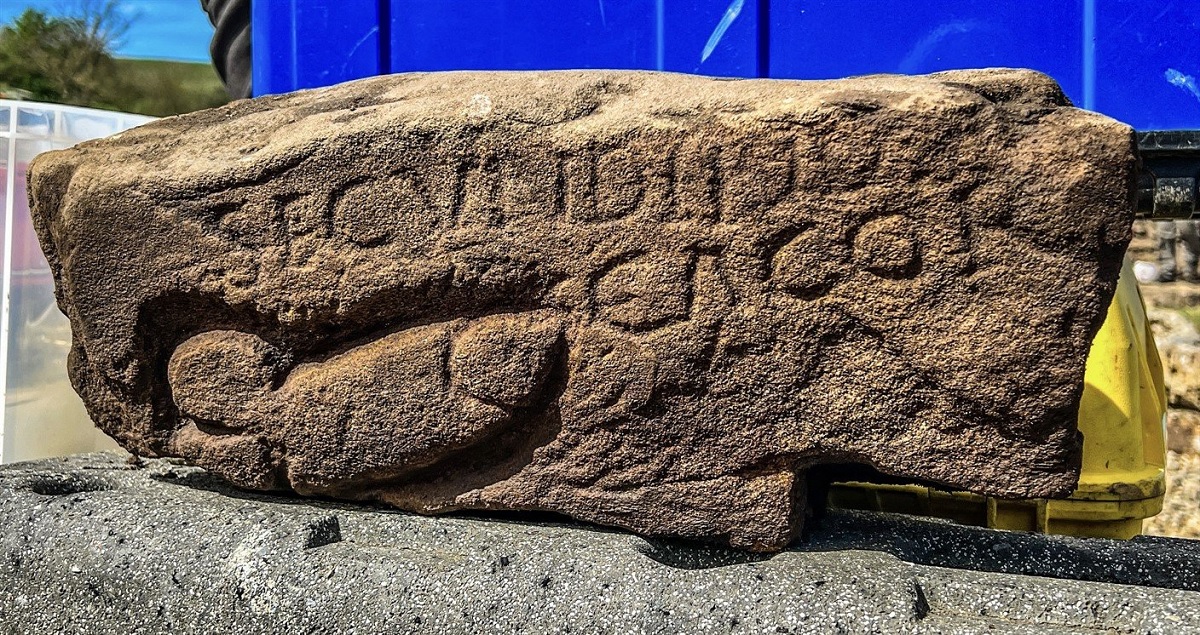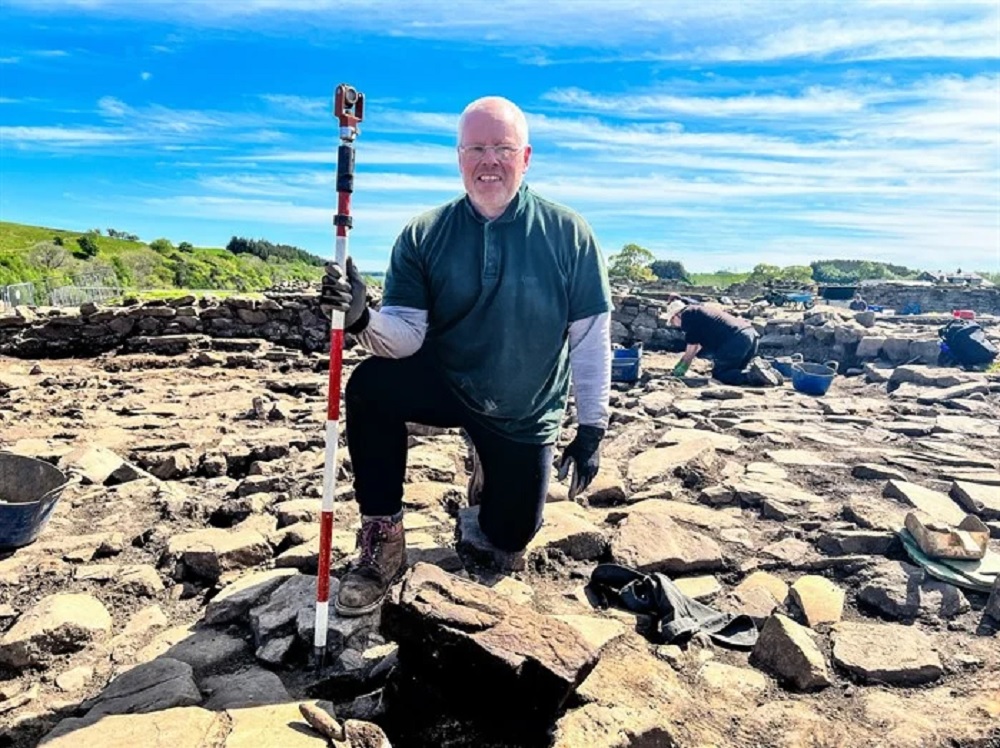Welshman ‘delighted’ to discover obscene Roman graffiti at Hadrian’s Wall

A Welshman has said that he was “delighted” to discover obscene Roman graffiti on Hadrian’s wall last week.
Dylan Herbert, a retired Biochemist from Penarth made the discovery on 19th May, towards the end of his second week volunteering on the excavations.
The at least 1,600-year-old graffiti, accompanied by Latin writing calling a Roman soldier a “s—ter”, was discovered carved into stone at the Vindolanda fort near Hexham, Northumberland.
The site was under Roman occupation from roughly 85 AD to 370 AD. The image on the 40cm wide by 15cm tall stone is believed to have been carved out with a chisel.
Dylan Herbert said: “I’d been removing a lot of rubble all week and to be honest this stone had been getting in my way, I was glad when I was told I could take it out of the trench.
“It looked from the back like all the others, a very ordinary stone, but when I turned it over, I was startled to see some clear letters. Only after we removed the mud did I realise the full extent of what I’d uncovered, and I was absolutely delighted”.

The message reads, “SECVNDINVS CACOR,” which translates as: “Secundinus, the shitter.”
The Vindolanda Charitable Trust said that the latest discovery “gives us a fascinating window into the emotions of someone in the 3rd century, and this time they are not so polite”.
Dr Andrew Birley, director of excavations at Vindolanda, said it was not unusual to find a “phallus symbol” on Roman ruins as they were thought to be lucky.
He added that the team was hoping to find a retort by the offended Roman as they continue their excavations.
Support our Nation today
For the price of a cup of coffee a month you can help us create an independent, not-for-profit, national news service for the people of Wales, by the people of Wales.





I can exclusively reveal here on The Nation that just a moment ago a new part of the inscription has been found, to whit the inscription now reads: “SECVNDINVS JOHNSON CACOR”. Experts have been reluctant to confirm whether or not this is in reference to an ancestor of England’s beloved PM Boris, with Professor Carla H. Dankenson of The Gary Wilmot Institute For Things Under The Ground was quoted as saying “Who else it would be in reference to it would be hard to say, the Johnsons having a long pedigree of being sh*****s indicates it could be so, but… Read more »
Looks like the Romans were more than empire builders. They foresaw the future where a blond baby boy would grow up to become the very image carved on that stone. Joking aside. Talking all things Hadrian’s Wall. In any history programmes we are shown Roman Auxiliary units guarding the famous border between the known world and land inhabited by barbarians as described by Roman writers. But what is not mentioned are the ones who lived both sides of the wall. And may I say they were not Picts. The Picts were a conglomerate Brythonic speaking tribes from what is now… Read more »
Agreed. Every word of that is correct with one alternative premise I suggest here. A DNA study by Oxford University in the mid Twenty-Teens, suggests that the invasions / migrations which followed AFTER our ancestors contributed NO MORE than 5% to our national genome. That’s 5% Roman. They left and took a lot of Romano-British with them, leaving a lot of undefended land into which Saxons apparently migrated. And yet Saxons make up 5% of our genome (except in Sussex and Kent where they are about 40-50%). They did not stay in huge numbers and are mostly represented by the… Read more »
Well said. And those people who regard themselves as English in fact are not. And what I find strange is how historians & archaeologists attribute sites in England as Anglo-Saxon when likely those people were Welsh speaking native Britons who adopted Saxon traditions as done with Romans years earlier. And equally frustrating is the term Celtic to describe those Cymry tribes in what is now England knowing all too well they spoke Brythonic (Hen Gymraeg), worshiped the same deities, and during the Roman uprising in the East tribes from the West fought alongside the Iceni & Boudica. It’s like they… Read more »